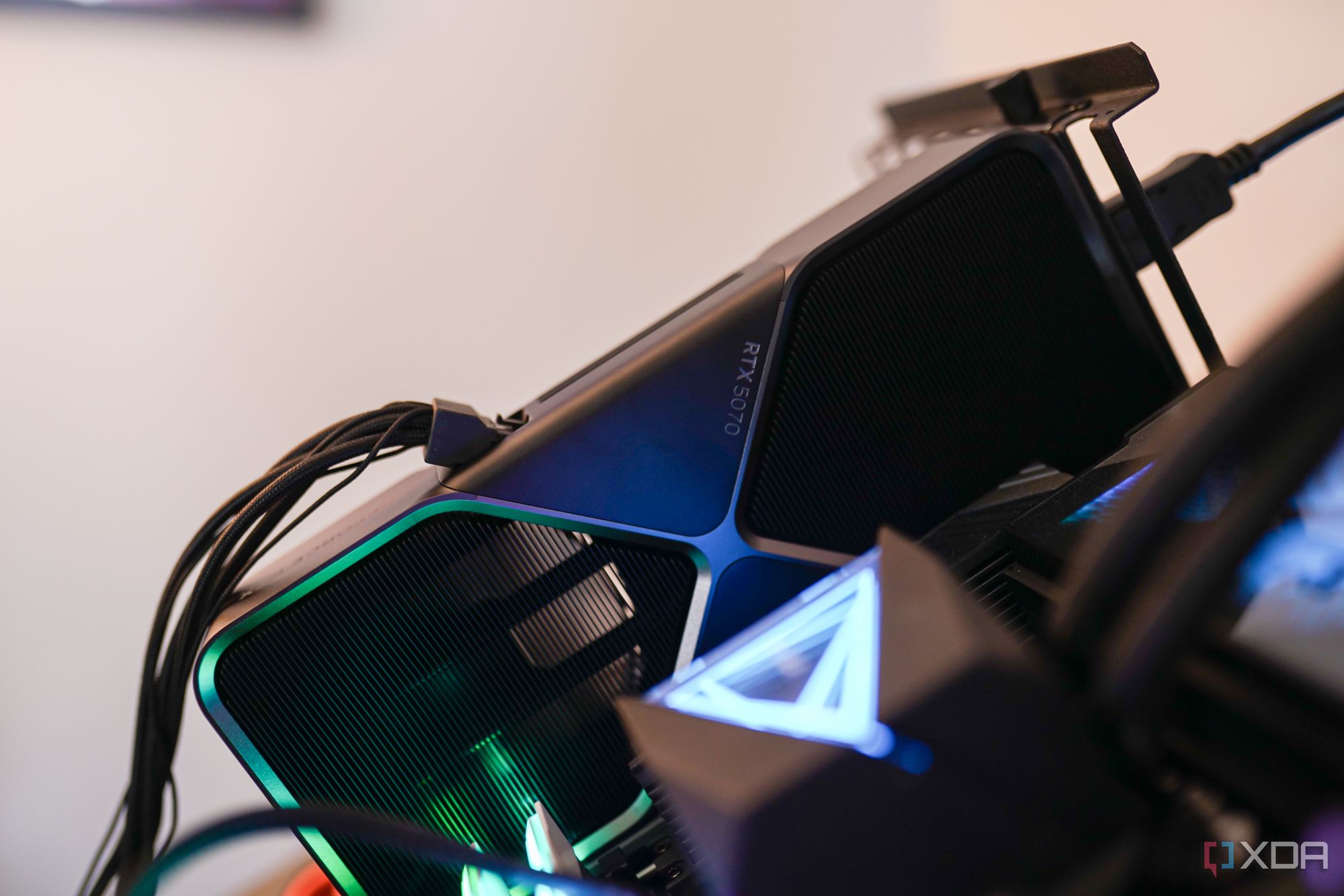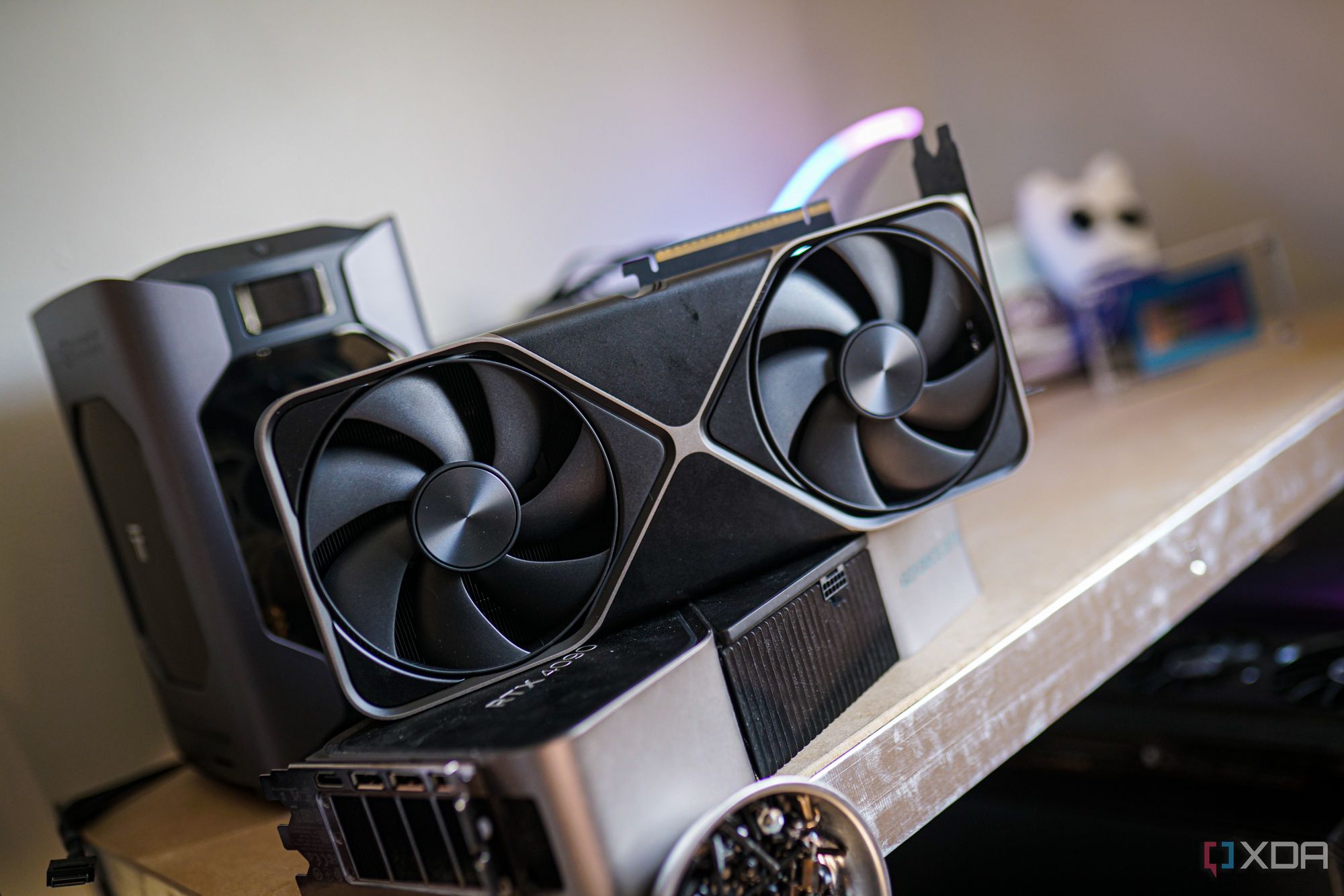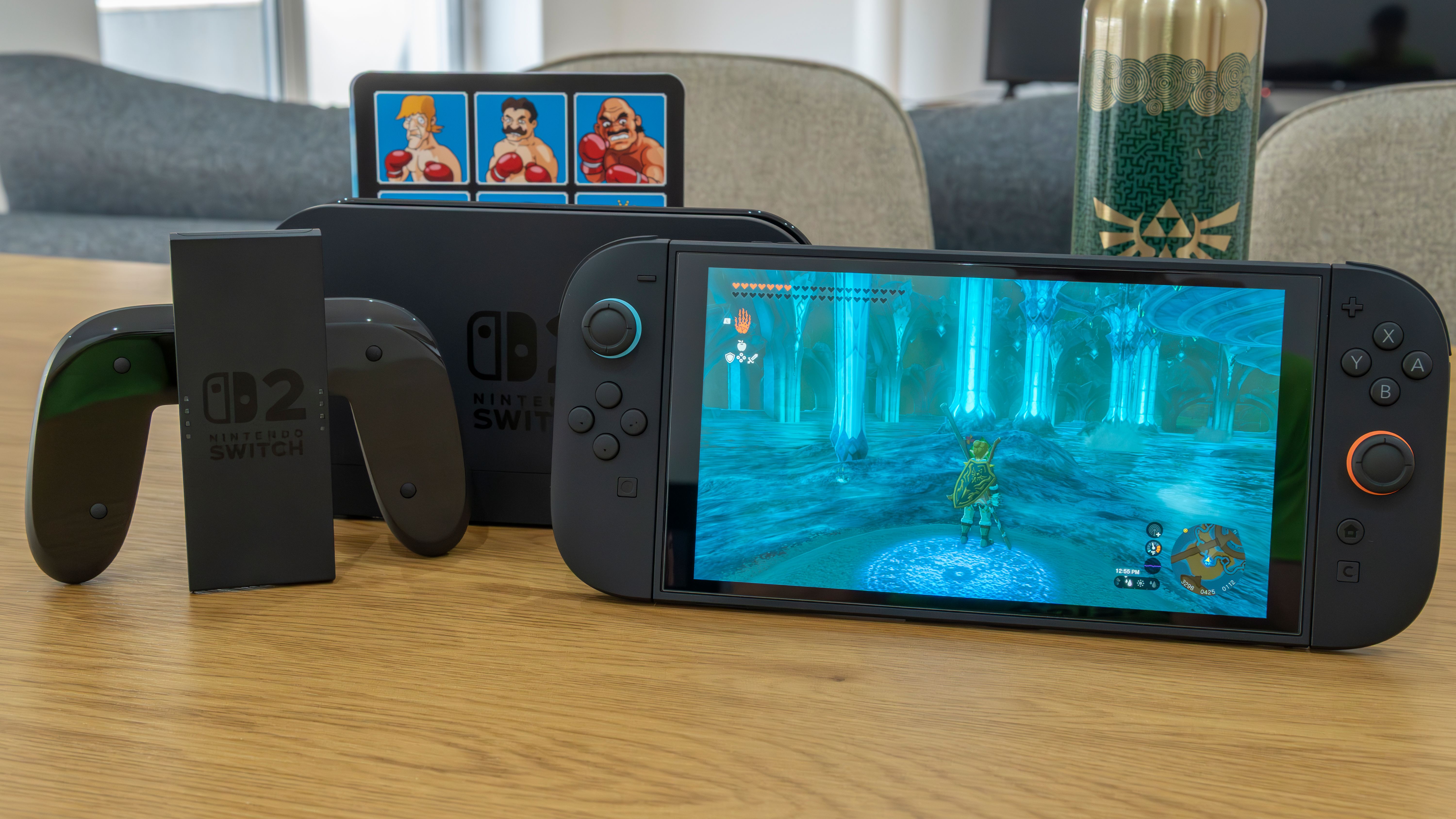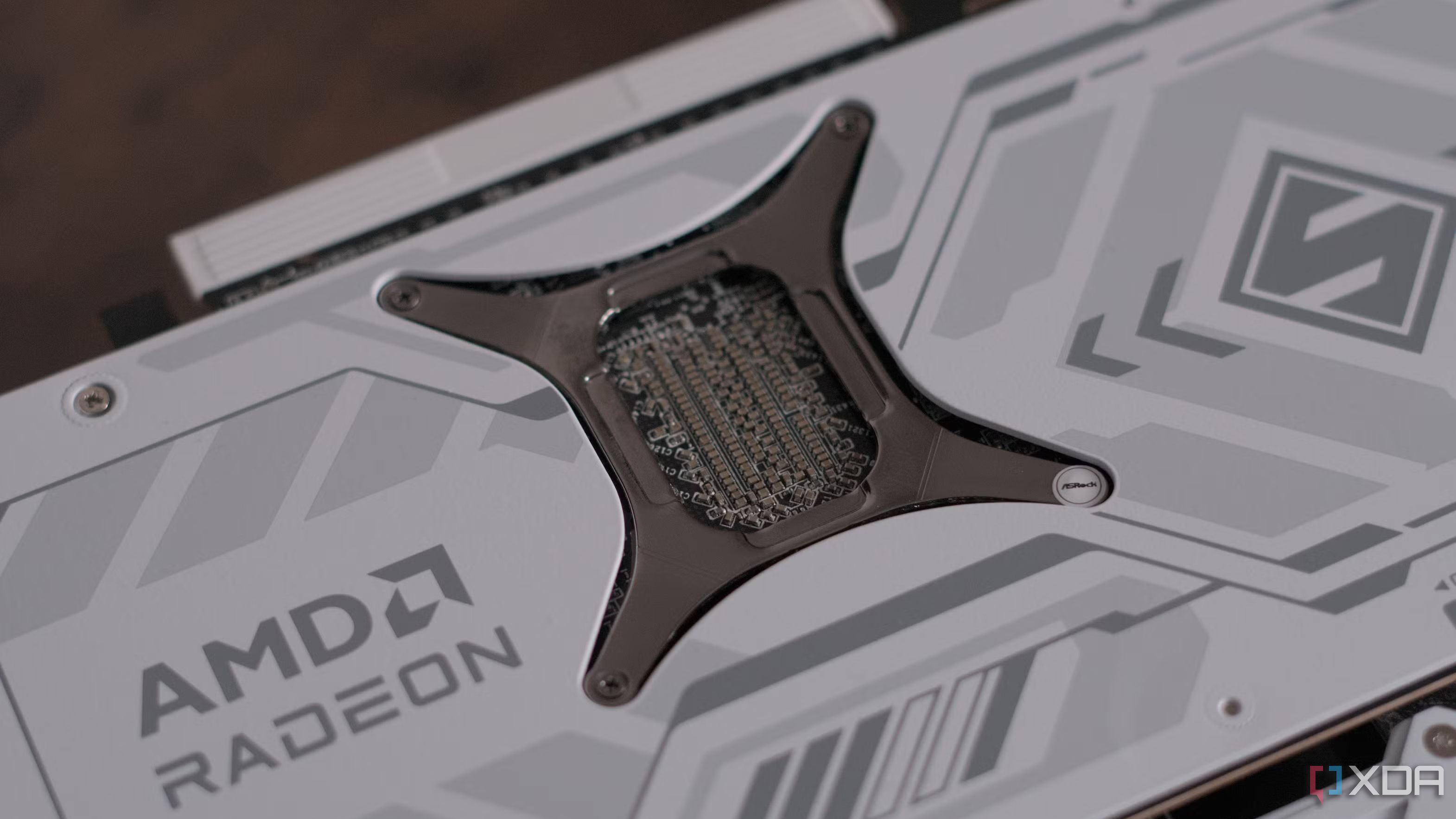One of the highlights of the Nintendo Switch 2 when it was revealed was the custom Nvidia SoC inside — and, in particular, its Ampere-based GPU that could leverage DLSS. It's no secret that DLSS is king when it comes to image quality among upscaling tools, so much so that the latest transformer model in DLSS 4 often looks better than simply running the game at native resolution. Now that the console is here and games packing DLSS are available, it's become clear that DLSS on the Switch 2 isn't the same as DLSS on PC.
The characteristics of the image of the Switch 2 don't match DLSS on PC, and even among Switch 2 titles, there's a ton of variance in image quality between titles like Fast Fusion and Cyberpunk 2077. That's due to what Digital Foundry — and the wider graphics community — have called "DLSS Lite." Games on the Switch 2 use a custom DLSS version, and although we don't know what that version is, games like Fast Fusion suggest it's a highly optimized preset meant to sacrifice image quality for better performance. And such a model could have a lot of implications for low-end PCs if it's ever released broadly.

Related
DLSS is Nvidia's Achilles heel — here's why
It's great for gamers, but DLSS can only hurt Nvidia in the long run.
DLSS works in a strange way
It hurts your performance before helping
DLSS has overhead, but it's really easy to forget that. It's a tool you use to improve your performance, and the performance improvements are so much greater than the computational overhead that you never notice it. Just run a game natively at the internal render resolution of DLSS and compare the results — DLSS will come out behind. Although it's easy to understand that DLSS has overhead, in the context of the Switch 2 and low-end PCs, it's important to understand why it has overhead.
You'll often hear DLSS referred to as "upscaling," but that's not really what it's doing, even if it produces the same results. With upscaling, you're using an algorithm to fill in missing pixels. The easiest way to think about it is a 1080p video playing on a 4K display. Each of the 1080p pixels is represented by a block of four pixels on the 4K display. That's how upscaling works at the most basic level, but from there, you can apply different techniques. Maybe you sample neighboring pixels to get a smoother gradient of color, or maybe you look at previous frames to get an idea of what those extra pixels should look like. That's upscaling.
DLSS performs upscaling, but the critical difference is that it doesn't have an algorithm. It's not just taking a pixel, running it through an equation, and sending an output. It's taking a pixel and running it through an AI model that's running locally on your GPU. It's a very small AI model, but it's an AI model nonetheless. And that AI model introduces more overhead than simply using an algorithm for upscaling. If you don't believe me, boot up a game with DLSS and FSR 1 and tell me which produces higher performance; it'll be the latter.
Thinking about DLSS as some special form of upscaling doesn't matter in most cases, short of giving Nvidia talking points in its marketing. When talking about DLSS Lite, though, it's important. Unlike the earlier versions of FSR that could run on just about anything rendering pixels, the hardware needs to meet a certain threshold of performance in order to use DLSS. If you go down low enough, the performance advantage of rendering fewer pixels will, eventually, be outclassed by the overhead of the AI model running. That's not an issue on any desktop graphics card that supports DLSS. On the Switch 2, however, it is.

Related
I have an RTX 50-series GPU, and I've barely touched DLSS 4
I've intentionally ignored quadrupling my frame rate, and for a good reason.
DLSS Lite, the Switch 2, and the hope for low-end hardware support
Understanding what lightweight DLSS looks like
The Switch 2 may pack an Ampere-based GPU, but the chip inside the console is leagues slower than even the slowest desktop RTX card. Even the RTX 2050 comes with more cores, and that's before talking about the thermally constrained environment of the Switch 2 and its need to operate at extremely low power targets. In that context, the need for a lighter DLSS model to run games on the Switch 2 becomes clear.
Although Nvidia hasn't shared details about this custom DLSS version that developers are using on the Switch 2, the results are immediately apparent — it looks worse. It still looks good, and likely better than what FSR would be able to achieve given a similar input resolution. But it's not the same quality that we've come to expect out of DLSS on PC. In all likelihood, it's DLSS with the AI model tuned down to be faster but less precise, giving game developers access to an upscaling solution that actually works and doesn't fall apart under the weight of its own overhead.
At least based on what we know now, that version of DLSS isn't available on PC. You might argue that if the weakest desktop RTX card is leagues faster than the Switch 2, then we don't need this DLSS Lite on PC. I think that perspective lacks vision of where technologies like DLSS, as well as the hardware it'll run on, is going in the future.
DLSS doesn't just get better; it gets more demanding
The ambitions for DLSS are great
Nvidia continually releases new versions of DLSS that slightly improve image quality, but it recently overhauled Super Resolution with the release of its transformer model. As I mentioned at the top of this article, the transformer model in DLSS 4 is so good that it often looks better than running a game at native resolution. The trade-off is that the transformer model is more demanding. The margins are usually thin, but you can see that the previous CNN model, indeed, produces higher frame rates than the transformer model in TechPowerUp's testing.
Not a problem on the RTX 3060 and RTX 3080 TechPowerUp used for testing, but on the Switch 2? No shot you could get the transformer model to run, at least in its initial state. Nvidia has actually already updated the transformer by reducing its VRAM usage by 20%. In its original form, the transformer model called for nearly double the amount of VRAM that the previous CNN model did.
And now, finally, we can talk about PCs. The hardware available today doesn't necessitate DLSS Lite, but the hardware of the future may. Nvidia has been very clear about its ambitions for DLSS and the role it'll continue to play in rendering, which will likely lead to larger, more demanding AI models. In some ways, we've already seen that with Frame Generation and Multi-Frame Generation, which are locked to certain generations of hardware. If Nvidia is able to pull the levers to better balance image quality and performance, perhaps a DLSS Lite on PC wouldn't be such a bad idea.
Maybe a few generations down the line, you can't run the full, fat version of DLSS on something like an RTX 4060, but you'll still be able to access the lightweight version. Or maybe Nvidia finally releases its rumored N1X SoC, and DLSS Lite is able to offer performance improvements without extreme overhead. The Switch 2 provides a glimpse into what that future DLSS might look like, and it proves that Nvidia is able to tweak its wildly popular utility to work on hardware that isn't specifically a desktop RTX GPU.
.png)













 English (US) ·
English (US) ·